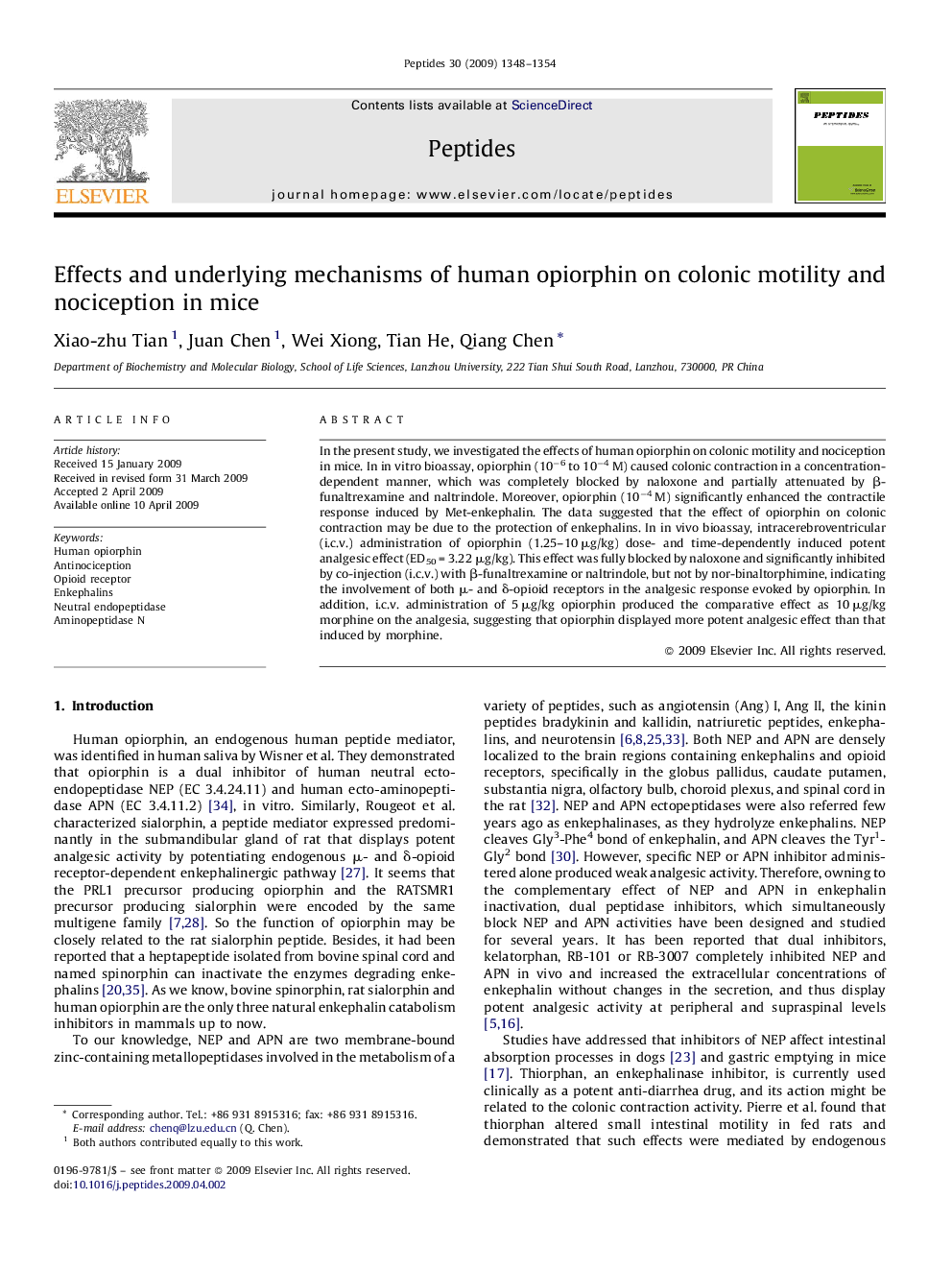| کد مقاله | کد نشریه | سال انتشار | مقاله انگلیسی | نسخه تمام متن |
|---|---|---|---|---|
| 2006731 | 1066351 | 2009 | 7 صفحه PDF | دانلود رایگان |

In the present study, we investigated the effects of human opiorphin on colonic motility and nociception in mice. In in vitro bioassay, opiorphin (10−6 to 10−4 M) caused colonic contraction in a concentration-dependent manner, which was completely blocked by naloxone and partially attenuated by β-funaltrexamine and naltrindole. Moreover, opiorphin (10−4 M) significantly enhanced the contractile response induced by Met-enkephalin. The data suggested that the effect of opiorphin on colonic contraction may be due to the protection of enkephalins. In in vivo bioassay, intracerebroventricular (i.c.v.) administration of opiorphin (1.25–10 μg/kg) dose- and time-dependently induced potent analgesic effect (ED50 = 3.22 μg/kg). This effect was fully blocked by naloxone and significantly inhibited by co-injection (i.c.v.) with β-funaltrexamine or naltrindole, but not by nor-binaltorphimine, indicating the involvement of both μ- and δ-opioid receptors in the analgesic response evoked by opiorphin. In addition, i.c.v. administration of 5 μg/kg opiorphin produced the comparative effect as 10 μg/kg morphine on the analgesia, suggesting that opiorphin displayed more potent analgesic effect than that induced by morphine.
Journal: Peptides - Volume 30, Issue 7, July 2009, Pages 1348–1354